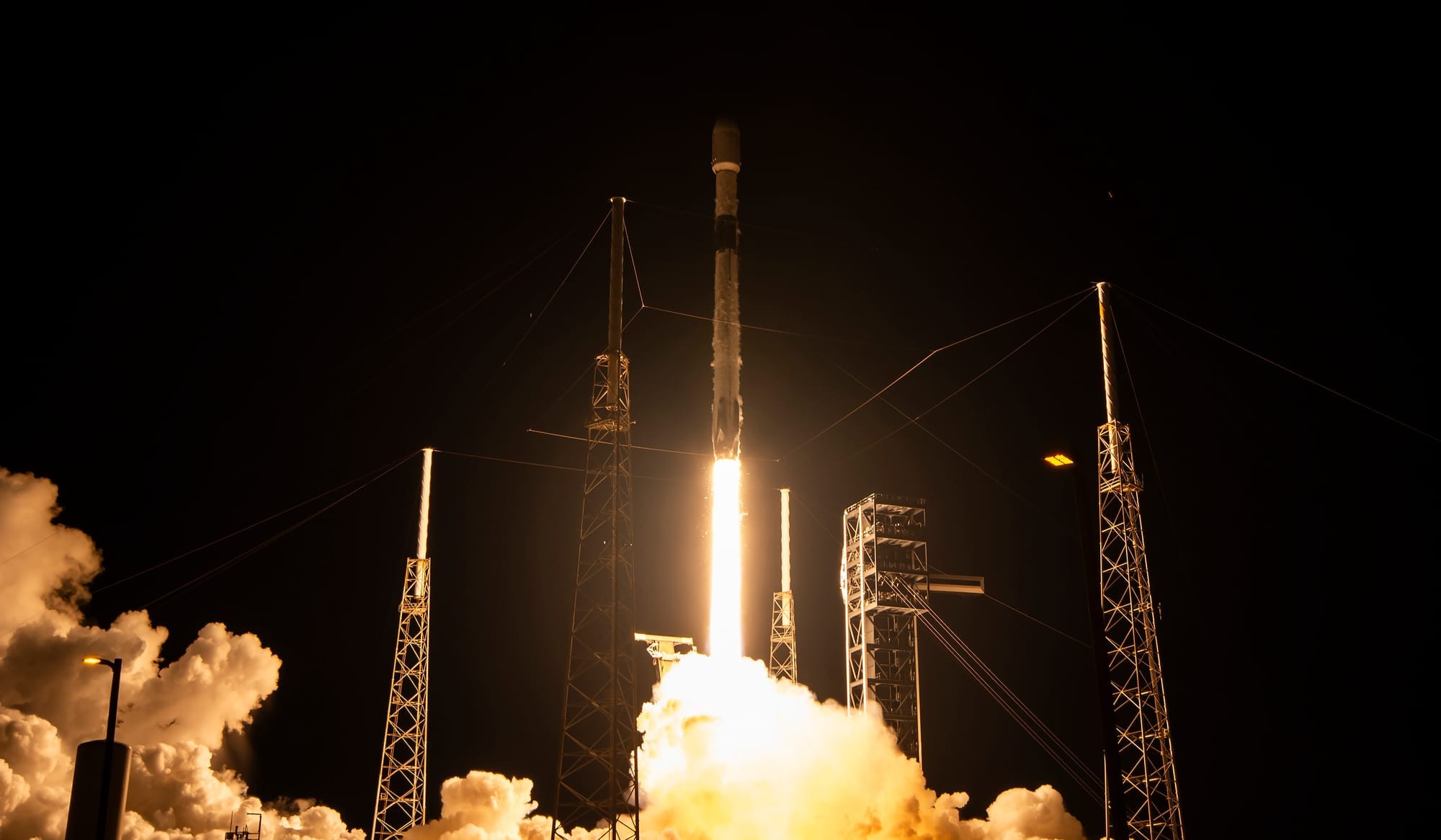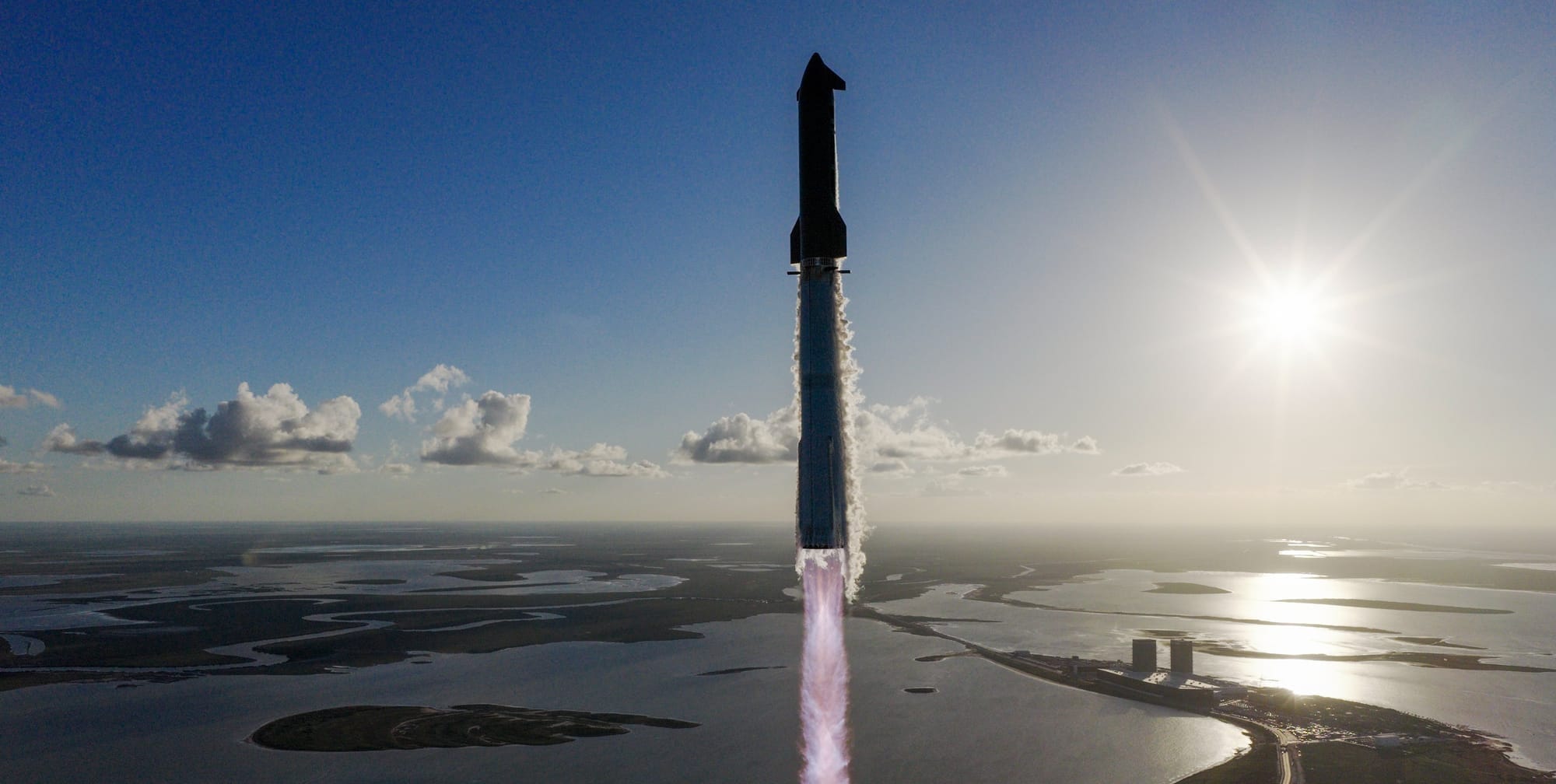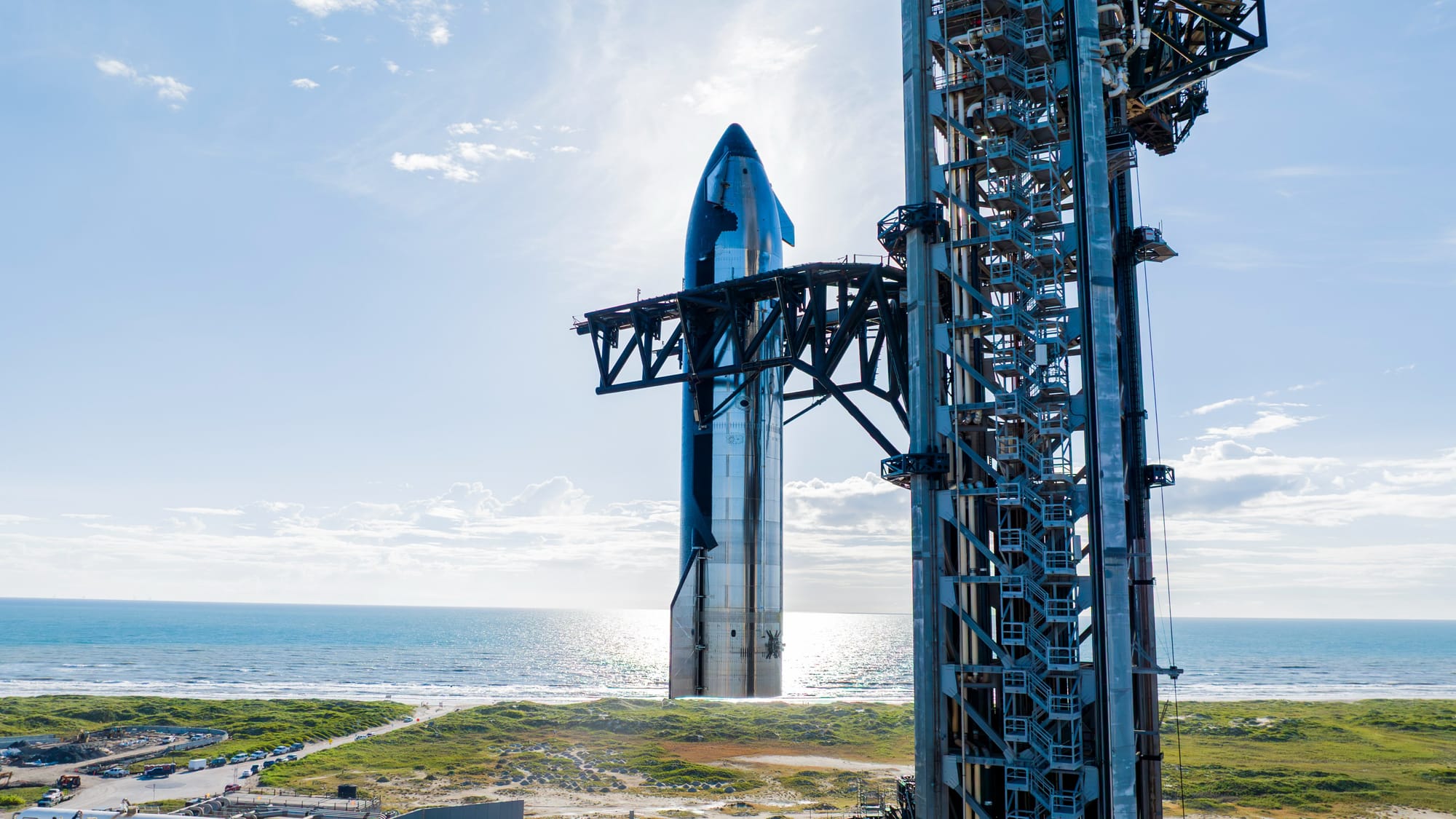Table of Contents
SpaceX's prototype fully-reusable Starship-Super Heavy blasted off from South Texas on May 27th at 23:36 pm Universal Standard Time for the vehicle's ninth test flight. This test flight utilized Ship 35, the third 'Block 2' Starship upper-stage, and Super Heavy Booster 14, flying for a second time.
Prior to the flight, SpaceX shared that Booster 14 would not perform a catch due to a number of reuse experiments onboard, while Ship 35 would aim to deploy eight dummy Starlink satellites and perform an in-space burn before splashing down in the Indian Ocean.
As is routine for the Super Heavy boosters now, all thirty-three of Booster 14's Raptor engines, with twenty-nine having flown before, along with one flying for the third time, ignited carrying the vehicle skyward over the Gulf of Mexico.
Liftoff of Starship! pic.twitter.com/aXAwLkRbuK
— SpaceX (@SpaceX) May 27, 2025
Starship-Super Heavy lifting off from South Texas for the vehicle's ninth flight test, via SpaceX on Twitter.
All of Booster 14's engines remained running throughout its second ascent to space, with all but three shutting down for hot-staging where Ship 35 ignited its six engines to head onward without the booster.
Starship’s Raptor engines ignite during hot-staging separation. Super Heavy is boosting back towards its splashdown site and preparing for its high angle of attack entry pic.twitter.com/aQBwsvSrl0
— SpaceX (@SpaceX) May 27, 2025
Ship 35 hot-staging from Booster 14, via SpaceX on Twitter.
During the boost-back burn, all thirteen engines needed to be restarted to send Booster 14 back toward land relit and burned as planned. After a few minutes of unpowered flight, Booster 14 relit twelve out of thirteen engines for a splashdown, momentarily slowing down before the vehicle exploded.
While the booster was heading toward the Gulf of Mexico, Ship 35 was powering through its ascent. During that ascent, propellant was seen leaking from the engine section, but the vehicle flew through to engine cutoff to place it on its desired trajectory. However, with the engine cutoff a spin of Ship 35 occurred due to the propellant leak.
Due to an issue with the payload bay door, the eight dummy Starlink satellites could not be deployed and remained onboard. The in-space Raptor engine restart was also forgone.
By the time Ship 35 reached atmospheric re-entry, it was still suffering from a spin, with attitude control lost and surrounded by what appeared to be its propellant that had leaked out. Due to the uncontrolled re-entry, Ship 35 was lost on descent.
Flight ten had been expected to head into orbit, had the ninth flight put 'Block 2' Starship upper-stage development back on track. An orbital flight is now likely pushed back to flight eleven at the earliest, toward the end of the year.
2025 had been poised to be a key year for the Starship program with a Ship-to-Ship propellant transfer demonstration for NASA. The propellant transfer between two vehicles is critical for getting the Starship lunar lander out to the Moon, and returning American astronauts to the surface, for one mission, through the Artemis program.
How does it compare to flight eight?
In good news for the Super Heavy booster but bad news for the Starship upper-stage, flight eight was a repeat of the prior test flight. During that flight, Booster 15 ignited all thirty-three Raptor engines, propelling the vehicle toward space. All engines ran until 'most engines cut-off,' at which point Ship 34 lit its six engines for hot staging. Booster 14 then headed back to the launch site via a boost back burn.
Mechazilla has caught the Super Heavy booster! pic.twitter.com/JFeJSdnQ5x
— SpaceX (@SpaceX) March 6, 2025
Booster 15 being caugt back at the launch site, via SpaceX on Twitter.
Following the boost back burn, Booster 15 fell back toward the launch site, lighting thirteen engines and then shutting down all but three for a third successful catch of the Starship program.
While the booster was flying as planned, Ship 34, like Ship 33, was encountering several problems. Over the course of a few minutes, Ship 34's Raptor engines gradually failed, some together, and almost nine minutes into the flight, telemetry from the vehicle was lost for good. SpaceX currently believes the loss of Ship 34 was due to unintended propellant mixing within the Raptor engines, despite occurring near the same point in flight as Ship 33 was lost to harmonic stresses, which damaged propulsion systems.
What is Starship-Super Heavy?
Starship-Super Heavy is SpaceX's in-development fully reusable super heavy-lift launch vehicle and the largest rocket currently flying. SpaceX is currently aiming to have the launch vehicle deliver one-hundred and fifty tons to low Earth orbit while reused or two-hundred and fifty tons when expended, although there are rumors from SpaceX of an expendable payload capacity of three-hundred tons.
On the launch pad, Starship-Super Heavy is one-hundred and twenty-four meters tall and weighs 5,000,000 kilograms fully fuelled. The diameter of both vehicles is nine meters, excluding aerodynamic control surfaces.
What is Starship?
Starship is the second-stage of the Starship-Super Heavy launch vehicle and is planned to be capable of multiple missions into orbit, after a short refurbishment. The vehicle is fifty meters tall and nine meters in diameter, excluding its four aerodynamic control surfaces. Fully fuelled with liquid methane and liquid oyxgen Starship is believed to weigh 1,300,000 kilograms with an approximate weight of 100,000 kilograms unfuelled.
The Starship second-stage is powered by three sea-level Raptor engines along with three vacuum-optimized Raptor engines. These sea-level engines are believed to generate 230 tons of thrust each with the vacuum-optimized engines generating 258 tons of thrust each for a total combined 1,500 tons of thrust for Starship. The vacuum-optimized Raptors are unable to gimbal requiring the sea-level Raptors for control of the second-stage on ascent and landing.
In order to survive re-entry for reuse, Starship has several thousand thermal protection tiles on one side of the vehicle and on all four of its aerodynamic control surfaces. The four control surfaces help guide the vehicle during re-entry and prior to landing inside the atmosphere at a pre-determined location. Starship also has a series of small thrusters to control the vehicle in space before re-entry.
SpaceX is believed to be working on a few variants of Starship for use as a Moon lander, propellant tanker, space station, Mars lander, and as a crewed spacecraft.
What is Super Heavy?
Super Heavy, also called 'the Super Heavy booster', is the first-stage of SpaceX's Starship-Super Heavy launch vehicle. The giant Super Heavy first-stage is planned to be capable of multiple flights per day with minimal refurbishments and inspections. The vehicle is seventy-one meters tall and nine meters in diameter, excluding its four grid fins and chines. Fully fuelled with liquid methane and liquid oyxgen Super Heavy is believed to weigh 3,600,000 kilograms with an approximate mass of 200,000 kilograms unfuelled.
The Super Heavy first-stage is powered by thirty-three sea-level Raptor engines generating a combined thrust of 7,590 tons, with each engine generating 230 tons of thrust. The outer twenty Raptor engines are unable to gimbal with the inner thirteen being able to for control of the first-stage.
To enable the reuse of Super Heavy, the vehicle has four large grid fins placed in the interstage to assist in guiding and controlling during descent. Super Heavy also has four chines running along the lower third of it to generate lift and assist in stabilization.
Shortly after completing the ascent, Super Heavy restarts ten engines, as three were running during staging, and performs a 'boost back' burn in order to return to the launch site. After the 'boost back' burn is completed the engines shut down with Super Heavy being guided by a series of small thrusters and its grid fins. Once Super Heavy is at the correct altitude above its landing location three engines start back up for the landing burn. SpaceX currently plans to have Super Heavy land back at the launch site, or at sea if a problem is detected during descent
Super Heavy also features a hot-staging ring atop of it to allow for a faster and simpler staging process, according to SpaceX. The hot-staging ring has dozens of gaps on the sides to allow for the Raptor engine exhaust of Starship to escape.






